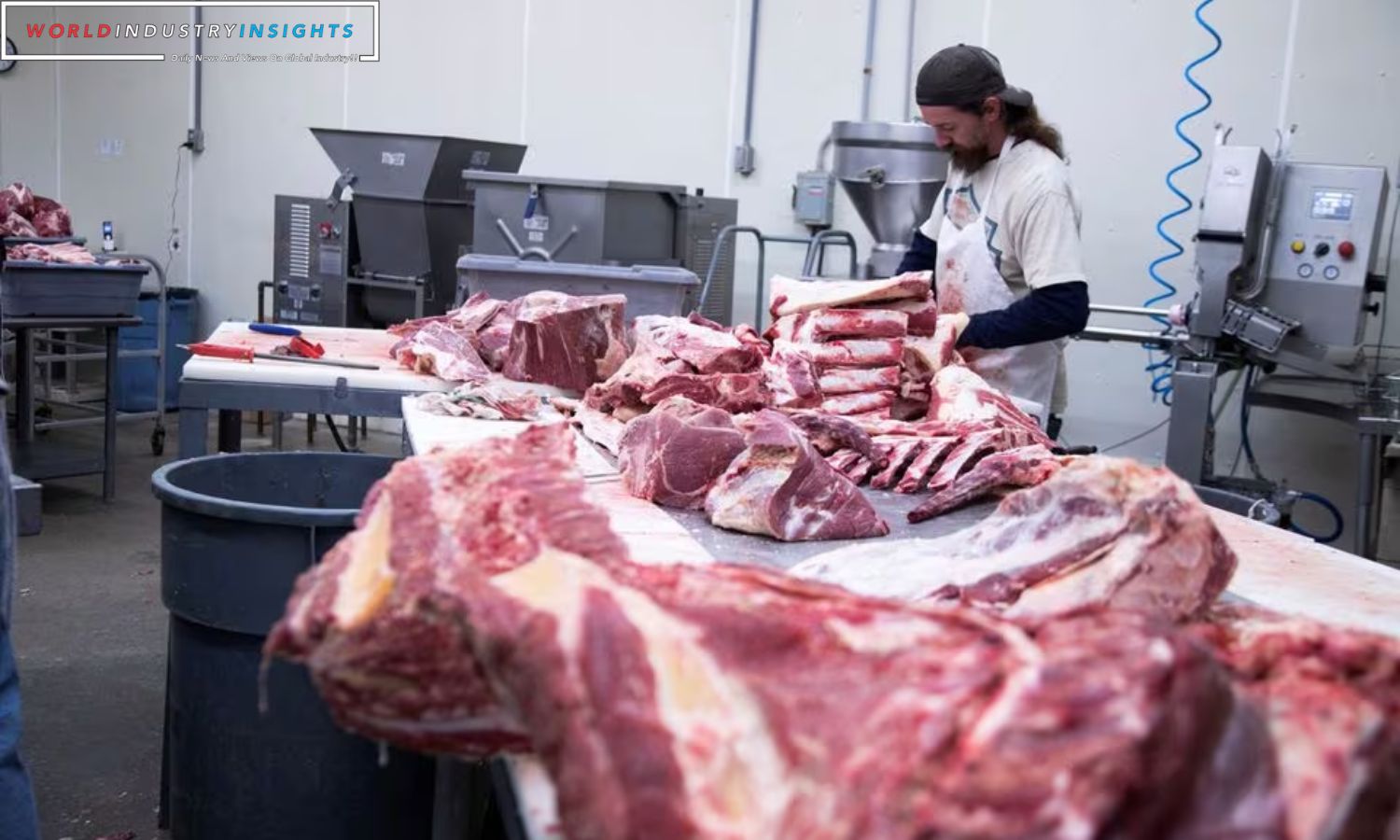Navigating the Global Beef Market: In the intricate dance of global beef dynamics, Tyson finds itself standing at a pivotal crossroads, grappling with the multifaceted challenges presented by a diminishing U.S. cattle herd and the ever-shifting tides of beef prices. The narrative of Tyson’s beef business unfolds against the backdrop of a complex global landscape, where the delicate balance of imports and exports is intricately woven into the fabric of the industry.
The prevailing decline in U.S. cattle numbers, a consequence of years of drought that desiccated pasture lands crucial for grazing, has resulted in a notable surge in U.S. beef prices. This surge, in turn, has incentivized companies, including Tyson Foods, to explore importing cheaper beef, thus recalibrating the calculus of international beef commerce. Tyson’s maneuvering in this intricate dance involves navigating the fine line between sustaining profit margins and meeting the demands of global markets, particularly those in China, Japan, and Egypt.
Analysts foresee a potential dip in demand for U.S. beef due to the higher costs associated with cattle and anticipate negative quarterly margins for Tyson’s beef business. This comes as a significant shift, marking the first time this year that Tyson, a key player responsible for processing about 85% of U.S. grain-fattened cattle, may experience negative margins in its beef unit. The company’s upcoming fourth-quarter earnings report is awaited with keen interest to gauge the impact of these market dynamics.
The U.S. is predicted to slip from second-largest beef and veal exporter in 2022 to fourth-largest of the year, according to the USDA. U.S. beef exports are expected to drop 14% to 3 billion pounds from 2022, changing the worldwide beef trade. In 2024, USDA expects beef exports to reach an eight-year low of 2.8 billion pounds as limited cow supplies reduce U.S. production.
Tyson, along with other major U.S. beef exporters like Cargill and JBS, faces what can be termed a “double whammy.” The confluence of higher prices and the strength of the U.S. dollar poses additional challenges, making American beef products less attractive to international markets. The impact of these factors on Tyson’s beef business is particularly significant, given that U.S. beef exports traditionally command higher margins than domestic shipments.
Also Read: Food Industry Under Fire: Deceptive Fast Food Ads Spark Legal Battles
Analysts from Goldman Sachs predict a swing in margins for Tyson’s beef business, from a positive 8% a year ago to a potential negative 1.1%. Such a significant shift underscores the broader challenges faced by the industry, where Tyson’s beef exports are pivotal in maintaining favorable profit margins. The decline in U.S. beef exports, coupled with the impact of a robust U.S. dollar, poses a formidable test for Tyson’s strategic maneuvering in the global beef market.
Tyson CEO Donnie King had previously warned about the challenging conditions in export markets due to low cattle inventories, emphasizing the potential headwinds facing the company. The dwindling U.S. beef cow herd, reaching its smallest size since 1962 in January, adds an additional layer of complexity to Tyson’s strategic decisions. The ongoing reduction in staff and the recent announcement of plant closures in Florida and South Carolina are indicative of the broader challenges faced by Tyson across its beef, chicken, and pork units.
As meatpackers, including Tyson, grapple with the conundrum of low margins and high-priced U.S. cattle, the strategic use of imports becomes a crucial element in managing through these challenges. Importing lean beef from countries like Australia and New Zealand to blend with U.S. supplies is a common tactic employed by meatpackers to maintain profitability. The USDA’s recent forecast, raising expectations for beef imports in 2023 and 2024, underscores the evolving dynamics of the global beef trade.
In the midst of these market shifts, the U.S. ranching industry is yet to embark on the path of rebuilding the domestic herd, with more than half of the nation’s cattle located in areas experiencing abnormally dry conditions. The slow pace of the rebuilding process adds to the challenges faced by U.S. beef exporters like Tyson, who must contend with tight cattle supplies and the resulting impact on exports.
The story of Tyson’s beef business unfolds as a narrative of resilience and adaptability in the face of a rapidly changing global landscape. The industry’s response to these challenges will likely shape the future trajectory of U.S. beef exports and determine the strategic positioning of major players like Tyson in the intricate dance of global beef commerce. As Tyson navigates these uncharted waters, the industry watches closely, anticipating the unfolding chapters in the ongoing saga of U.S. beef on the global stage.
Our Reader’s Queries
What is the world market for beef?
The beef industry is booming, with a global market size of USD 467.7 billion in 2021. Experts predict that this growth will continue at a steady pace, with a compound annual growth rate (CAGR) of 4.8% from 2022 to 2030. This means that the demand for beef is on the rise, and the industry is poised for even more success in the coming years.
How much is the beef market worth?
The COVID-19 pandemic has had a significant impact on the global Beef market. As per market analysis and insights, the market size is expected to be valued at USD 281850 million in 2022. However, it is forecasted to reach a readjusted size of USD 326860 million by 2031, with a CAGR of 2.5% during the review period. This indicates a steady growth trajectory for the market, despite the challenges posed by the pandemic.
What is the market size of cattle?
In 2023, the Beef Cattle Production industry in the US generated $85.4bn in revenue. However, the industry experienced a slight decline of -0.1% in market size during the same year. Can you tell me what the growth rate of the industry was in 2023?


